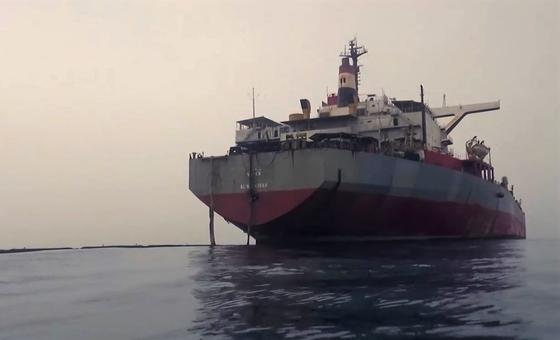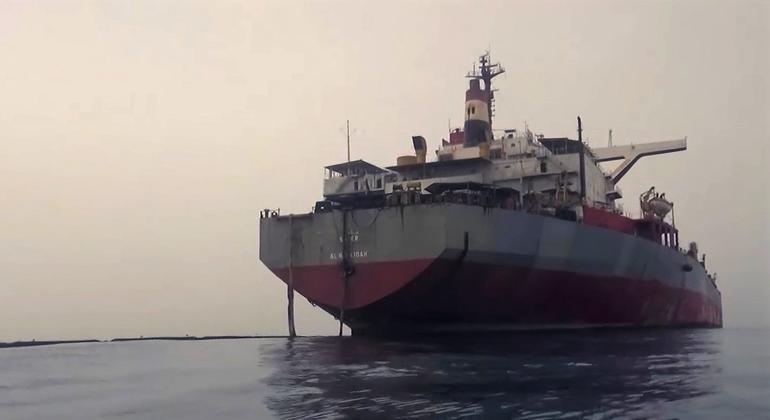
UN Secretary-General António Guterres welcomed the news of the successful transfer of oil aboard the FSO Safer to a replacement vessel, thus “avoiding what could have been a monumental environmental and humanitarian catastrophe.”
The FSO Safer was built as a supertanker in 1976 and converted a decade later into what is in effect a floating oil container.
Risk to the region
The tanker was abandoned off the Red Sea port of Hudaydah after civil war broke out in 2015. Prior to the conflict, it was used to store and export oil from fields around Ma’rib, but the fighting brought production, as well as maintenance of the vessel, to a halt.
The UN had repeatedly warned of the danger the decrepit tanker posed to Yemen and the wider region as it was at risk of leaking, breaking apart or exploding, which would have resulted in catastrophic environmental and humanitarian consequences.
Any potential oil spill would have forced the closure of all ports in the area alone, cutting off food, fuel and other life-saving supplies to a country where more than 21 million people – 80 per cent of the population – rely on aid.
‘A proud moment’
Following two years of fundraising, including through a crowdfunding appeal, a UN salvage team began pumping oil from the FSO Safer onto a replacement vessel on 25 July – part of a two-track plan.
This follows preparations on-site by leading marine salvage company SMIT, a subsidiary of Boskalis, which began in May. The UN Development Programme (UNDP), which contracted SMIT, is implementing the operation.
“Today is a proud moment for the many people across the UN System as well as our donors and partners who have worked tirelessly over the past months and years to avert a disaster in a country already vulnerable following protracted conflict,” said Achim Steiner, UNDP Administrator.
“There is still work to be done, but today we can say with confidence that the immediate threat of a spill has been averted,” he added.
Two-track process
As much of the 1.14 million barrels of oil has been extracted as possible. However, less than two per cent of the original oil remains mixed in with sediment that will be removed during the final cleaning.
The second phase involves installing a mooring system so that the replacement vessel, which is called Yemen, can remain in place.
The Secretary-General reaffirmed the UN’s commitment to fully complete the operation, which has an overall cost of over $140 million, with some $20 million still needed.
“He expresses his gratitude to the Yemeni authorities whose support has been critical to its success. Additional funding will be needed to finish the project and remove any remaining environmental threat to the Red Sea,” UN deputy spokesperson Farhan Haq said in a statement.
Finish the job
Mr. Guterres also thanked the many countries, corporate and philanthropic donors, as well as ordinary citizens, who contributed funding for the project. He urged donors to step up support towards its full conclusion.
The UN Resident and Humanitarian Coordinator for Yemen, David Gressly, who has led UN system-wide efforts on the Safer since September 2021, echoed his message.
“Today is a great milestone,” he said. “A remarkable global coalition came together under the UN umbrella to prevent the worst-case scenario of a catastrophic oil spill in the Red Sea. We need to finish the work the UN started.”



